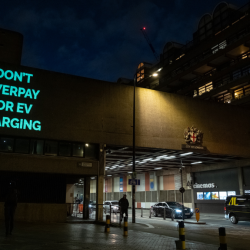When Amazon came to market in 1998 it set e-commerce on a different trajectory, and laid the foundations for retail media’s evolution to where we are now…
Twenty five years later, brands have been investing their marketing spend in retailers, striving to make their products the top choice for consumers. But it begs the question: what next? Advances in digital, tech and data enablement have led to the emergence of Retail Media Networks (RMNs) at varying stages of development across different markets. As more and more retailers recognise this highly profitable revenue stream potential, it has led to fragmentation, a lack of standardisation, and a pressing need for commercial and marketing upskilling.
It would be easy to think that RMNs are therefore redundant, but that’s not the case.
Changing how we utilise them, and rethinking how we approach these challenges will unlock the full potential of this new era, characterised by unique, targeted experiences, facilitating the closure of measurement and delivery loops.
It will make them fit for purpose.
Collaboration is essential
The idea of RMNs is a win-win for everyone involved: retailers, advertisers, and consumers alike, and this all comes down to data access. Advertisers and retailers have the shared objective of driving sales and improving the customer experience. By working together and sharing data, they can create more effective advertising campaigns that are aligned to the needs and interests of their customers.
Retailers have access to valuable first-party data combined with a deep understanding of customer behaviour. Both can be improved with the purpose of targeting and personalisation in advertising campaigns. By collaborating with advertisers, retailers can ensure that this data is being used effectively and ensure ads are being shown to the right audience at the right time. When augmented with the right message, this can also increase the likelihood of a sale, thus driving revenue for both parties.
Balancing short and long term
In what is being dubbed the ‘third wave of advertising’, retail-owned ad networks must work hard to connect the dots and capture a greater share of marketers’ attention. Brands engaging with RMNs should think about the bigger picture here and not treat them as just another paid media channel through which to gain ROI: change needs to be more incremental than that. They are arguably in the unique position to be much more than just another digital channel.
Advertisers have many formats and tactics to play with, from sponsored content on retail media platforms to effectively building awareness and aligning their brand with relevant topics or themes, to the inclusion of eye-catching video or graphics-based display ads to capture the attention of consumers browsing on the retailer’s website or app. By leveraging their first-party data and retargeting, advertisers can display targeted ads to users who have previously interacted with their brand, increasing the likelihood of consideration and conversion, or even suppressing customers who have recently purchased.
They can also lean into the power of community. Through influencer partnerships, advertisers can reach a wider audience and build credibility through the endorsement of trusted voices on social media or the retailer’s website. They can also encourage product reviews from customers themselves by offering incentives or creating campaigns that highlight the importance of customer feedback. This can help potential customers make more informed decisions about whether to purchase a particular product.
The role of media agencies
In order for brands and retailers to deliver strategies that are fit for purpose, further guidance is required. This is where agencies can play a vital role and adopt a more assertive, guiding position. Agencies have a wealth of experience in managing, activating and optimising media campaigns in digital ecosystems effectively across search, social and programmatic platforms. This means they know what works/ doesn’t work when it comes to the different capabilities which should be fed back into the development of retail media networks — a key requirement to develop shopper marketing strategies in this new era.
At the start of the decision-making process, there needs to be greater interaction with broader commercial teams outside of the traditional stakeholders and wider adoption of a holistic approach to the customer journey and connecting everything – including commercial teams, customer relationship management (CRM) platforms, paid media and product teams.
Audience data can be shared with partners in data clean rooms allowing retailers/ advertisers to match their anonymised data in a privacy-compliant way, which only adds further fuel to successful consumer-centric campaigns. Brand and media managers are still key in the mix, but repurposing people from other disciplines across the organisation can facilitate a joined-up approach across the user journey; to help make it more seamless rather than more fragmented. As a result, it’s agencies that should oversee staff training to ensure everyone in the process will be equipped to manage this evolving landscape.
As embracing the expanding world of RMNs and the power of first-party data becomes non-negotiable, collaboration is the right way forward. We must work together to develop best practices, leveraging data across channels for campaigns. All of this whilst ensuring compliance with privacy regulations, obtaining appropriate consent from customers and ensuring that data is stored and used in a secure manner. Tick them off the shopping list, and the opportunities will be endless.
Featured image: Marwan Amhed / Unsplash
























